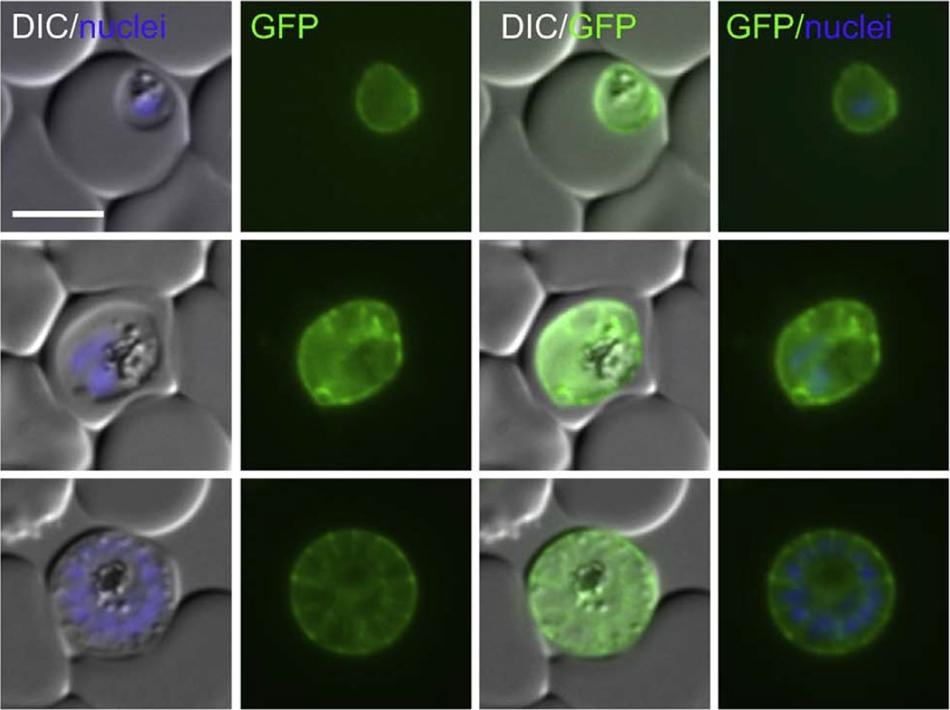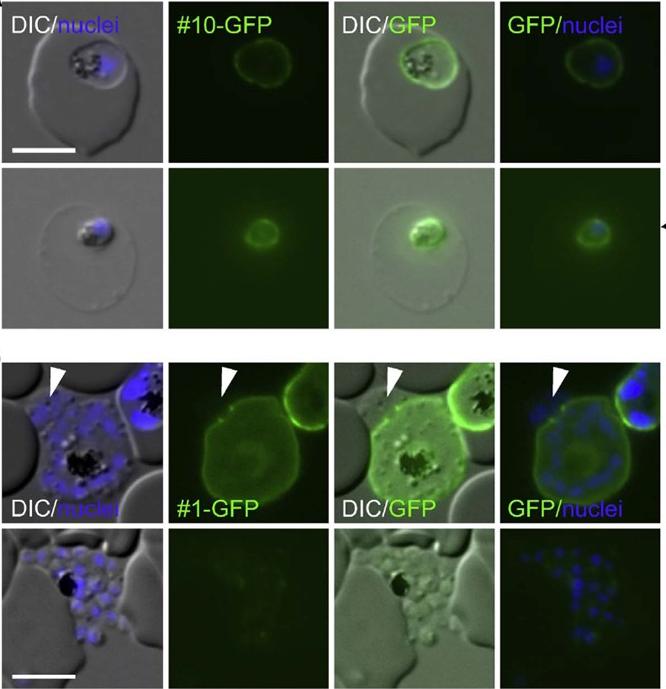PCHAS_1443700 conserved Plasmodium protein, unknown function
Disruptability [+]
| Species | Disruptability | Reference | Submitter | |
|---|---|---|---|---|
| P. berghei ANKA |
Possible |
PlasmoGEM (Barseq) | PlasmoGEM | |
| P. berghei ANKA |
Possible |
RMgm-4190 | Imported from RMgmDB | |
| P. berghei ANKA |
Possible |
RMgm-4537 | Imported from RMgmDB | |
| P. falciparum 3D7 |
Possible |
USF piggyBac screen (Insert. mut.) | USF PiggyBac Screen | |
Mutant phenotypes [+]
| Species | Stage | Phenotype | Reference | Submitter |
|---|---|---|---|---|
| P. berghei ANKA | Asexual |
No difference |
PlasmoGEM (Barseq) | PlasmoGEM |
| P. berghei ANKA | Asexual |
Difference from wild-type |
RMgm-4190
Growth and multiplication of blood stages in mice comparable to wild type parasites. Normal virulence. |
Imported from RMgmDB |
| P. berghei ANKA | Asexual |
No difference |
RMgm-4537 | Imported from RMgmDB |
| P. falciparum 3D7 | Asexual |
No difference |
https://www.nature.com/articles/ncomms16044
(Knock down)
Normal growth rate upon glmS KD |
Theo Sanderson, Wellcome Trust Sanger Institute |
| P. berghei ANKA | Oocyst |
No difference |
RMgm-4537 | Imported from RMgmDB |
Imaging data (from Malaria Metabolic Pathways)

Proteins without TM that are located in the PV. The top microscopy panel row shows a ring and a trophozoite stage, the middle row shows a schizont and the bottom row shows a late schizont. Inspection of late stage parasites - in this phase, the PPM isinternalised to surround the merozoites, leading to a ‘bunch of grape’ - no typical bunch of grape staining pattern was observed. Instead the signal surrounded the merozoites as a group, not individually.Khosh-Naucke M, Becker J, Mesén-Ramírez P, Kiani P, Birnbaum J, Fröhlke U, Jonscher E, Schlüter H, Spielmann T. Identification of novel parasitophorous vacuole proteins in P. falciparum parasites using BioID. Int J Med Microbiol. 2017 Jul 27. [Epub ahead of print]
See original on MMP
Saponin lysis during microscopy of a cell expressing parasitophorous vacuolar protein 2 (upper panel). The identical infected RBC is shown before (top row) and after (bottom row) lysis with saponin. release of the PV content using saponin did not abolish the signal in the parasite periphery, clearly showing that the signal around the parasite with PV2derives from the full-length protein. (B) A late schizont expressing serine/threonine protein phosphatase UIS2 (bottom panel) shows release of merozoites (arrow head) while the fluorescence still surrounds the bulk of the remainder of merozoites (top row) and no fluorescence is observed in released merozoites (bottom row). Some late stages were observed where merozoites had already been partially released but, in contrast to the merozoites in the remainder of the schizont, were not surrounded by GFP signal (arrowheads). As the released merozoites aresurrounded by PPM, this indicates that these proteins were associatedwith the PVM. In agreement with this, no fluorescence was observedwith fully released merozoites.Khosh-Naucke M, Becker J, Mesén-Ramírez P, Kiani P, Birnbaum J, Fröhlke U, Jonscher E, Schlüter H, Spielmann T. Identification of novel parasitophorous vacuole proteins in P. falciparum parasites using BioID. Int J Med Microbiol. 2017 Jul 27. [Epub ahead of print]
See original on MMPMore information
| PlasmoDB | PCHAS_1443700 |
| GeneDB | PCHAS_1443700 |
| Malaria Metabolic Pathways | Localisation images Pathways mapped to |
| Previous ID(s) | PC000382.05.0, PCAS_144370, PCHAS_144370 |
| Orthologs | PBANKA_1441700 , PF3D7_1226900 , PKNH_1446300 , PVP01_1445100 , PVX_123975 , PY17X_1444200 |
| Google Scholar | Search for all mentions of this gene |